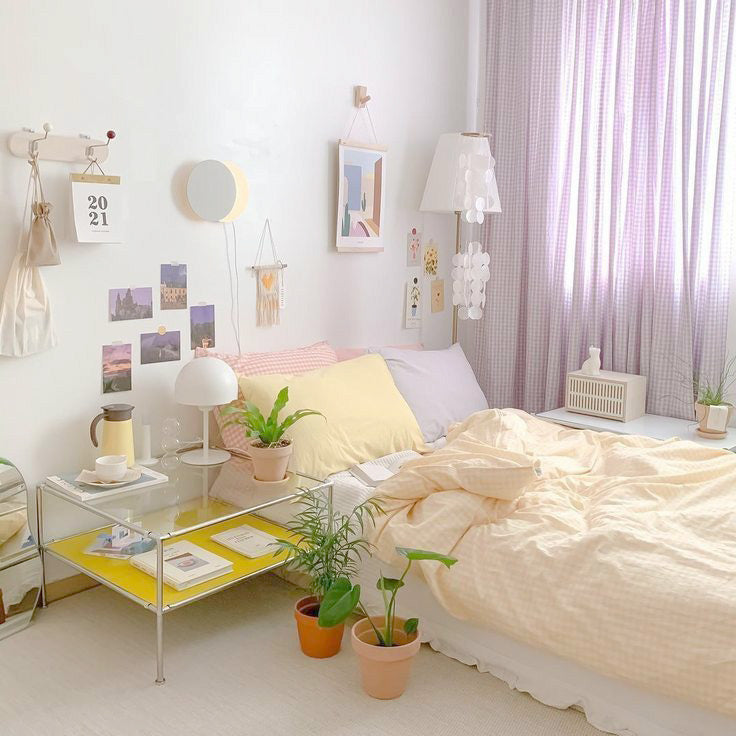When it comes to creating a cozy and serene living environment, the right decor can make all the difference. One trend that continues to capture hearts is pastel room decor. The gentle, muted tones of pastel colors can transform any space into a tranquil oasis. In this article, I will share my personal experience with pastel decor, tips, trends, and practical ideas to help you embrace this charming style in your home.
Understanding Pastel Colors
Pastel colors are soft, light hues that typically include shades like mint green, baby blue, lavender, pale pink, and soft yellow. These colors create a calming atmosphere and can complement various interior styles.
The Psychology of Pastel Colors
Colors can significantly impact mood and feelings. Pastel shades are known to evoke tranquility and relaxation, making them an excellent choice for bedrooms, nurseries, and refreshingly peaceful living areas.
Common Pastel Colors and Their Meanings
| Color | Meaning |
|---|---|
| Pale Pink | Love, warmth, and calmness |
| Baby Blue | Trust, peace, and serenity |
| Mint Green | Refreshment, health, and tranquility |
| Lavender | Spirituality, calmness, and creativity |
| Pale Yellow | Optimism, cheerfulness, and energy |
Pastel Room Decor Ideas
Now that we understand the essence of pastel colors, let’s explore various ideas to incorporate them into your room decor.
1. Walls and Paint
Painting Your Walls
One of the simplest ways to introduce pastel hues into your space is by painting your walls. A soft pastel shade can serve as a beautiful backdrop for your decor.
Accent Walls
If a complete overhaul isn’t feasible, consider creating an accent wall using pastel wallpaper or paint. This allows you to have a pop of color without overwhelming the room.

2. Furniture Choices
Incorporating pastel-colored furniture pieces can be an effective way to freshen up your space.
Pastel Furniture Ideas
- Soft pink or mint green sofas can be a statement piece.
- Pastel dining chairs can brighten an otherwise neutral dining area.
- Light-colored pastel dressers can add charm to a bedroom.
3. Textiles and Fabrics
Textiles are a great way to experiment with pastel colors without making a permanent commitment.
Cushions and Throws
Introduce pastel hues through cushions, throws, and blankets. Layering different pastel shades can create an inviting and cozy atmosphere.

Rugs and Curtains
A pastel rug can anchor your room and add a soft touch. Similarly, pastel curtains can filter light gently, enhancing the serene vibe.
4. Decor Accessories
Accessorizing with pastel decor pieces allows for easy changes as trends evolve.
Wall Art
Choose artwork that features pastel colors or even create your own masterpiece with pastel paints.

Decorative Objects
Vases, lamps, and decorative bowls in pastel shades can add subtle elegance to your room.
Creating Harmony with Pastels
While pastel colors are inherently calming, creating harmony in your decor is essential. Here are some tips to achieve a cohesive look:
1. Complementary Colors
Pair pastel colors with neutrals like white, beige, or gray to prevent the space from feeling too colorful. This balance allows pastel colors to shine without overwhelming the senses.

2. Layering Textures
Adding various textures—such as soft fabrics, smooth surfaces, and natural materials—can enhance the overall feel of your pastel decor.
3. Consistent Theme
Whether it’s a vintage, modern, or bohemian style, ensure that your pastel selections align with the overall theme of your room.

Pros and Cons of Pastel Decor
Like any design choice, pastel decor has its advantages and disadvantages.
Pros
- Creates a calming atmosphere
- Versatile and can suit various styles
- Timeless appeal
- Easy to accessorize with additional colors

Cons
- Can feel too soft or childlike if overdone
- Maintenance of light colors may require more frequent cleaning
- May not suit every homeowner’s style preference
Pastel Room Decor: Personal Experience
When I first decided to redecorate my living room, I had a vision of serenity. I chose a soft mint green for the walls and structured my decor around it. The transformation was remarkable! I used pale pink cushions and layered them with neutral throws. The soft pastel palette created an inviting atmosphere, making it the perfect space to unwind.
I also ventured into DIY with pastels by painting old furniture in a lavender hue. The process was enjoyable and added a personal touch that simply purchasing new furniture could not provide.
Tips for DIY Pastel Decor
- Start small if you’re new to pastel colors—accessories can be a good entry point.
- Experiment with mixing pastels to find a combination that resonates with your style.
- Consider the amount of natural light in your space; lighter pastels work well in darker rooms.
FAQs about Pastel Room Decor
What are the best pastel colors for a bedroom?
Soft pink, lavender, and mint green are excellent choices for bedrooms due to their calming and relaxing properties.
How can I incorporate pastels into a small space?
Use pastel accessories like cushions, rugs, and art to add color without overwhelming the room. Light pastel walls can also make a small space feel larger.
Are pastel colors suitable for every interior style?
Pastels are quite versatile and can complement many styles, including modern, vintage, and bohemian. However, balance is key to avoid a too-sweet or whimsical look.
How do I maintain pastel decor?
Regular cleaning and dusting will help maintain the beauty of pastel decor. For fabrics, consider using a fabric cleaner that is safe for the materials used.
Can I mix pastel colors with bold colors?
Absolutely! Mixing pastels with bold colors can create a dynamic and visually interesting decor. Just ensure that you maintain a balance to avoid overwhelming effects.